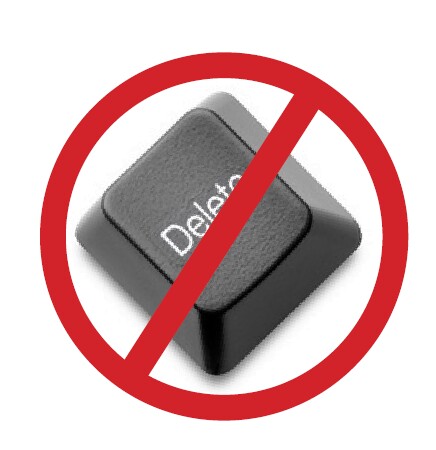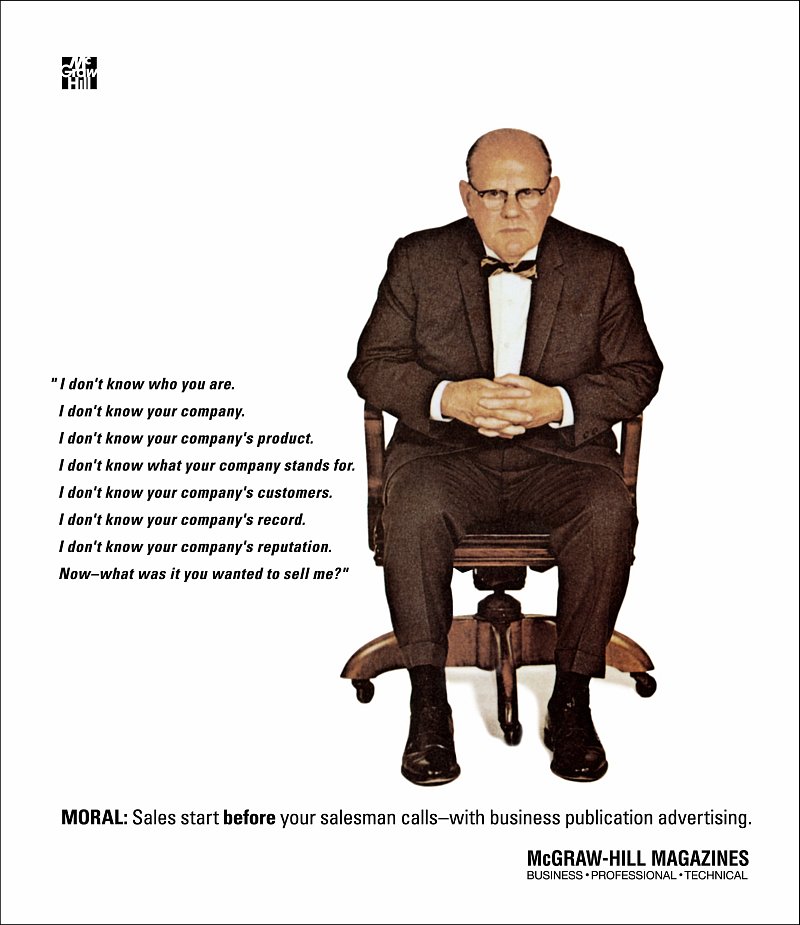As we all know, Pinterest and Instagram have become staples on the social media scene. The right visuals (from photos to quotes to inspirational messages) have great appeal and serve as motivation for many. With that in mind, here are some interesting visuals coupled with some content concerning marketing issues that face marketing teams almost daily as they work towards creating the change in the way people use and interact with their company’s products or services. Short, sweet and fun. Click away! 
The average attention span today is roughly 9 seconds…like that of a goldfish. Nine seconds to communicate a message, earn a little bit of loyalty, build a little bit of trust so you can continue the conversation before your customer starts getting distracted! So what could you possibly say in that time or less to get someone’s attention? It starts with presenting your message in clever and unexpected ways. It grabs people’s attention and has them focusing on the message and not thinking about the other stuff that could come into their mind. They’re engaged and captivated. In doing so, it allows you to persuade them, get them to trust you, get them to believe you, get them to want to connect with you. A shift in perspective from speaking about yourself to speaking from the audience’s point of view can be remarkably effective. Witness a beautiful commercial for a British online content company featuring a blind man whose original cardboard sign talks about himself, “I’m blind. Please help.” But when a caring passer-by changes the words to be more audience-focused, something powerful happens. The symbolism is powerful. To read more, click here.
Social media as a pathway to sales is almost certainly not going to work to the degree you want. There…I said it. While social media can be a valuable marketing tool, it’s not magic and it cannot and won’t replace everything that came before it. There’s no quick success and very few programs break through. Coca-Cola says it can find no correlation between “buzz” on Twitter and actual unit sales. Nissan admits it has no idea if social media helps it shift cars. MasterCard can’t tie its social investment to revenues. Don’t take my word for this. Go online and do your own research and see for yourself. In fact, there remains little evidence social media does anything to boost brands’ bottom lines. So then why use social media at all? The reason is that it is an impactful vehicle for empowering advocacy and we know that’s extremely important for brand health and profitability. Social media, if done right, can capitalize on what brand equity your company has already built up. To read more, click here.
 When was the last time you/your marketing team asked the question “I wonder what would happen if we ________.”Crazy ideas have changed the way we go about living our lives. Knowing this, why is it that many marketers still don’t trust the crazy idea when it shows up unexpectedly especially, since crazy ideas, not safe ideas, are the game changers that propel companies forward? In today’s competitive, me-too world, if your product isn’t a legitimate leader in a category, it’s certainly a far better choice to come up with a new value story around your own product or service rather than trying to compete price-wise on the value that was generated by a competitor. You might want to be thinking about a crazy idea that will create a new meaning around your brand. Embrace that mindset so much so that the next time an idea is presented by your marketing department and someone outside of that department says “That’s a crazy idea,” you’ll say, “Thanks, we love it as well!” To read more, click here.
When was the last time you/your marketing team asked the question “I wonder what would happen if we ________.”Crazy ideas have changed the way we go about living our lives. Knowing this, why is it that many marketers still don’t trust the crazy idea when it shows up unexpectedly especially, since crazy ideas, not safe ideas, are the game changers that propel companies forward? In today’s competitive, me-too world, if your product isn’t a legitimate leader in a category, it’s certainly a far better choice to come up with a new value story around your own product or service rather than trying to compete price-wise on the value that was generated by a competitor. You might want to be thinking about a crazy idea that will create a new meaning around your brand. Embrace that mindset so much so that the next time an idea is presented by your marketing department and someone outside of that department says “That’s a crazy idea,” you’ll say, “Thanks, we love it as well!” To read more, click here.
If you want to have passionate customers and dedicated partners, you must first inspire strong responses. But as you attract fans, you’re also bound to get the critics or “Haters.” It’s OK to have some folks (not too many, though) who will not like your brand. The undeniable reality is that if you’re not eliciting a negative response from someone somewhere, then you’re probably not that fascinating to anyone. Think about it, even Apple has Haters as does Starbucks and it hasn’t hurt them. Alternatively, you have the advocates, evangelists, loyalist…the Lovers. They don’t just buy your product or service, they also accept price increases and forgive occasional “issues.” They’re loyal and not just buying your products for price or utility. In the middle are the Lukewarmers. They have a really bad habit of not caring. They won’t buy your product unless it’s the cheapest or most convenient option which means they’re only buying you until a cheaper or more convenient alternative comes around. In today’s marketplace, this middle ground is death!! Not caring is not buying. Not caring is inaction. The world is not changed by people who sort of care or don’t care at all. Stop focusing on the Lukewarmer. Start by having your marketing and advertising be imaginative, original and fresh. To read more, click here.
Having dealt with all sorts of companies and people, I believe the Number One reason for boring “vanilla” marketing messages is the result of trying to please all the people all the time. Fighting the desire to be all things to all people lets you: 1. Stand out from the herd; 2) Attract the like-minded; and 3) Create stronger connections. Vanilla brands might not have enemies, but they also don’t have passionate advocates whose enthusiasm spreads. In order to win the race, you can’t stand still. Vanilla marketing is standing still. To stand out, to be different, to be memorable, takes boldness. It takes being “a real Marketer”. So, however you go about it, stop defaulting to dishing out plain vanilla marketing and start scooping out interesting flavors (think “Cherry Garcia”; “Chubby Hubby”; or “Chunky Monkey”, etc.) that stand out and are uniquely your own. To read more, click here.
So there you have it. 5 visuals that speak to different marketing challenges and opportunities. Maybe these visuals will stick with you for awhile and even change the way that certain projects, campaigns and programs are developed and executed. Seeing is believing.
####
Rolf Gutknecht is vice president, director of account services for LA ads. To discuss your thoughts with Rolf on this blog or any marketing matters, email via this link, or visit www.LAadsMarketing.com. You can also connect with Rolf on LinkedIn.
by Rolf Gutknecht, Agent of Change (c) 2012
I’m not sure about you, but in the deluge of emails that comes my way each and every day, it’s real easy start deleting them without even thinking about whether there’s content that might make my life and that of my clients easier and better. So, I stopped doing that about  6 months ago and now take the time to open each one and at the very least scan for interesting info. Maybe I’ll see something about trends, or research data, facts, or a tidbit about helpful hints. Without doing so, I’d miss out on stuff I should know about and, respectfully said, that’s probably the case with you as well.
6 months ago and now take the time to open each one and at the very least scan for interesting info. Maybe I’ll see something about trends, or research data, facts, or a tidbit about helpful hints. Without doing so, I’d miss out on stuff I should know about and, respectfully said, that’s probably the case with you as well.
Well, with your indulgence, I wanted to share with you 10 pieces of information that you may not be aware of which in turn will help you grow your business by seizing on untapped revenue-producing opportunities. So, here goes:
As I said, it’s easy to delete a bunch of good information that comes your way because of time constraints, being short staffed or being overwhelmed with email after email. But this is all good information that I received and looked over before I hit the delete key. If you’ve read this far, you’ve made the same thoughtful decision as well.
by Rolf Gutknecht, Agent of Change (c) 2012
Tell me a fact and I’ll learn. Tell me a truth and I’ll believe. But tell me a story and it will live in my heart forever. — Indian Proverb
Ever wonder the best way to represent your product or service to prospective clients or customers? Here’s something to think about. Stop talking about the features of what you offer. Don’t even focus on the benefits. Don’t tell me how good you are or why you’re better than the competition. Instead, tell me about a situation your customers typically find themselves in. Paint me a picture of how that situation is improved by the use of your product or service. Show me what success looks like. Capture my interest with people or places that resonate with me. Don’t focus on you, your company or your products. Instead, tell me a good story!
Since the beginning of language, stories have continued to teach, inspire, entertain, motivate and engage us like no other form of communication. From bedtime stories when we were young to story time in elementary school to the sharing of family stories around the dinner table, they connect us on a much deeper level than any list of advertising bullet points could ever do. For those not convinced, try telling any favorite story using only bullet points and then decide which format people find more memorable and meaningful.
Recently, my business partner, Dan, and I met with a mid-sized “challenger brand” company to talk about their business goals and how we could help them grow their business in the face of a number of competitors. Tom, the company president, talked about his products and their features. It was the same stuff we’ve heard time and time again from other companies in his industry. It was only when he got away from the rattling off of bullet points and suddenly spoke emotionally and passionately about how one of his customers was saved from the brink of bankruptcy because of his company’s tailored services did we immediately feel more connected with his business.
So what’s the secret to good storytelling?
Well, there is a right way and wrong way to tell stories. The secret lies in making an emotional connection with buyers because emotions play the dominant role in most decision-making processes. We need to tell our stories with authenticity and real passion in order to cut through the information overload that buyers experience and the BS shields they put up. On that note, talk like a human. Enough with the business babble. Don’t worry about sounding smart. It’s alienating and condescending, and your story will be quickly lost on your audience. Talk like a human being that cares about making meaningful relationships with people.
So how do you relate your story to the reader so that it resonates and motivates them to take action in the form of purchase or even just their wanting to retell your story and spread the word? Here are few things to think about:
So that’s my story for today and I’m sticking to it. What’s yours? Go out and create your own stories and “live happily ever after.”
by Rolf Gutknecht, Agent of Change (c) 2012
I had a phone conversation with a prospective new client (I’ll name her Amelia) last week and during our talk, I mentioned having seen a cable TV ad that her company had run recently and was wondering if it had produced growth in sales inquiries or better yet, generated more sales. Her response is something that I’ve heard more times than “Doan’s has pills.”
Amelia reported less-than-stellar performance, which didn’t really surprise me. But she fingered the blame on the media type…and not the marketing process or the message. The spot was flat-out boring and crammed with too many feature points. The message itself had no spark; the ad employed uninspiring, overused stock images that everyone has seen on other companies’ commercials; and while it had a lot of words attached to it, it said nothing. I know you know the kind of ad. You see them every day in trade publications, direct mail, online and yes, even on TV.
When I politely asked her if maybe it wasn’t the media but the message, my suggestion was immediately dismissed as “no, no. that’s not it. Cable just doesn’t work.” In this case it was TV but I’ve heard it for most every B2B and B2C media type there is. So I quoted to her legendary adman Bill Bernbach’s “golden rule”: “The truth isn’t the truth until people believe you, and they can’t believe you if they don’t know what you’re saying, and they can’t know what you’re saying if they don’t listen to you, and they won’t listen to you if you’re not interesting, and you won’t be interesting unless you say things imaginatively, originally, freshly.”
Now before I move on, please take another 15 seconds and read the above quote again and let it wash over you…it’s that important.
You see, what this timeless observation says applies to everything a marketing executive does in communicating a brand’s promise or a product’s sales message, and then needs to shine through like a huge Klieg light within your ads, your sales support material, your promotional initiatives, your tradeshow booth, your collateral and your website.
Taking the uninspired or predictable way out leads to self-inflicted mediocrity which we all know is like a communicable disease. It starts with a so-so idea and coupled with a lack of interestingness and imagination, it infects every aspect of your marketing to the point that regardless of how and where you present the message, your current and prospective customers will not give it two seconds of thought as it passes by, only to become part of the background noise and clutter.
I’m not sure about you but one of the main reasons I decided that advertising and marketing was what I wanted to pursue as a profession was because I loved coming up with marketing ideas that would make people sit up and take notice in a sea of indifference.
If you want your marketing to actually change the trajectory of sales, if you want yourself to be seen as an idea person rather than a “fulfiller” of marketing stuff, then the status quo is not an option. You need to create new truths for your company that people believe in because you say things “imaginatively, originally, freshly.” To do otherwise, especially in today’s economy, is unacceptable.
Back in the early 1940s, Rosser Reeves of Ted Bates & Company coined the phrase “USP – Unique Selling Proposition.” The term referred to a having, finding or creating a distinctive point of view or reason to buy that is wholly different from the competitions’.
But as a catchphrase, USP is so 70-years-ago!
In the 80’s, marketing agencies, HR consultants and motivational speakers started using the term “elevator pitch,” which kinda says the same thing: What is so special about you (or your company, or your product) that you can express it in just 30 seconds on the ride up the elevator and expect the listener to get it? We hear that term a lot in angel and investor meetings.
More recently, we find ourselves using the phrase “value proposition.” And we’ve shorted the time to about 5 seconds, but we’ll settle for 30, just as long as it clearly tells the story.
Your value proposition is the answer to the question “what customer objective does my company help to achieve better than anyone or anything else?”
Whichever term you favor, USP, elevator pitch, or value proposition, without it, without a good one, you’re dead! If you can’t very quickly describe what makes you, your product, your service or your company truly special in the eyes of the customer, don’t expect your customer to do it for you. By default, they’ll just put you on the shelf called “commodity,” and there you’ll stay.
Every business, no matter what the business, starts out with the same baseline of customer fulfillment as its competition. If you have a fast food restaurant, for example, you might say your value proposition is fresh entrees at reasonable prices. But then, doesn’t the competing restaurant down the road also say that? So that alone doesn’t really make you special, does it? Poof, you’re a commodity! You’re just the same as everybody else.
On the other hand, your value proposition has to be one that is not merely unique but deserves an exclamation point in the eyes of your customer. It has to create a real sense of Wow! or there really is no value, just proposition. What can you say that captures the imagination and puts you in a class all your own? That’s at the very heart of making a sale or losing out on one.
I’ll be honest, defining your value proposition takes some real corporate soul-searching at the most fundamental level. It requires seeing yourself from your competitors’ customers’ point of view. It may even require re-inventing your organization so that there’s an entirely new but better value proposition than the one you’re claiming now.
 Commit to asking yourself, just as soon as you finish reading this post, “what’s our value proposition?” Ask your associates and see if their answers agree with your own, and if they can articulate it in less than 90 seconds. Aim for 30. (For my company, we can do it in two seconds: “Agent of Change.” We even own the registered trademark on it!)
Commit to asking yourself, just as soon as you finish reading this post, “what’s our value proposition?” Ask your associates and see if their answers agree with your own, and if they can articulate it in less than 90 seconds. Aim for 30. (For my company, we can do it in two seconds: “Agent of Change.” We even own the registered trademark on it!)
Your value proposition is the very cornerstone of your business. All sales and marketing must emanate from it. The stronger your value proposition is…
…and the more clearly it expresses your unique ability to improve your customer’s lives…
…and the most concisely you can articulate it between elevator floors…
…the more confident you can be in betting on your company’s success!
Alright, business hasn’t turned around as quickly as you’d like – or as quickly as anyone would like. So your customers aren’t throwing their spending money at you any more than you’re shelling out dollars to hire additional staff, add new locations or expand your advertising reach.
Instead, if you’re like most companies, you’re continuing to be as parsimonious with your spending and investing as good business judgment dictates, right? That means you’re more focused on sales than on marketing, since marketing means spending money whereas sales means making money, right again?
Many businesses have grown their sales force while decimating their marketing departments. They’ve turned from brand-building to such “instant gratification” sales-based marketing strategies as direct response and SEO. At the same time, they’re making price the deciding factor.
What could possibly be wrong with that?
So let me propose two basic flaws in that kind of approach.
First, the further away from image and brand marketing you move, the less the customer is predisposed to buy from you regardless of price, since your brand is no longer the top-of-mind preferred choice. That means A) you have to wait until the customer is ready to buy and not a second before, and B) you are now set up for trading exclusively on price since your value proposition has taken a distant back seat…and there’s always a competitor who will come along with a cheaper product or service.
The second strategic flaw is that you’re now doing exactly what your competition is doing, hunkering down and playing the DR/sales/price game at precisely the time advertising rates are the most affordable they’ve ever been. Today, you can negotiate the most advantageous ad programs and one-up your competition with strong visibility while they’re still virtually invisible.
The opposing argument might be that in this sucky economy consumers are more price-focused than brand focused. And yet…
Why is it that sales of Apple’s iPad, an absolutely non-necessary (but really great) product, are booming? With each new iteration of the iPad, a $600 – $800 purchase, there are lines of anxious shoppers waiting outside the Apple Store. Simply, Apple presents a fantastic value proposition in its advertising that has nothing to do with price. The Apple brand and the iPad experience are king. Their strategy is so successful that in 2011, Apple sold more iPads in its last quarter than HP sold desktop computers all year!
The true job of advertising and marketing is to establish a consumer’s desire in advance of asking for the order. Without this first stage, building desire and brand equity, the selling process is exponentially more difficult. Any wonder why the sales cycle for most businesses has doubled or even tripled over the past few years as marketing budgets have been cut?
This is nothing new. In fact, the business publisher McGraw Hill addressed this very issue in a brilliant ad that ran in the early 1960s. In essence, the ad demonstrated that without marketing laying the foundation of understanding and desire prior to the sale, the barrier is significant.
So you’ve been given a gift, as it were, in the form of a recession. From a marketing perspective, your competitors are asleep at the wheel, and you can afford marketing visibility as you never have before. Here’s your chance to let them suffer the recession while you profit from it. How will you handle the opportunity?